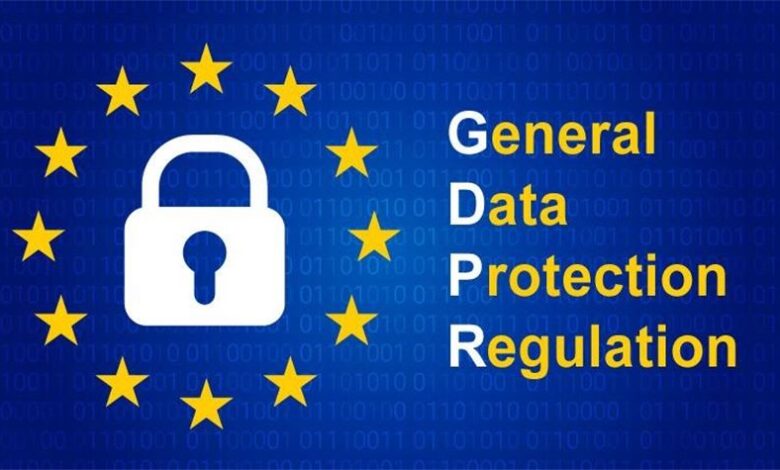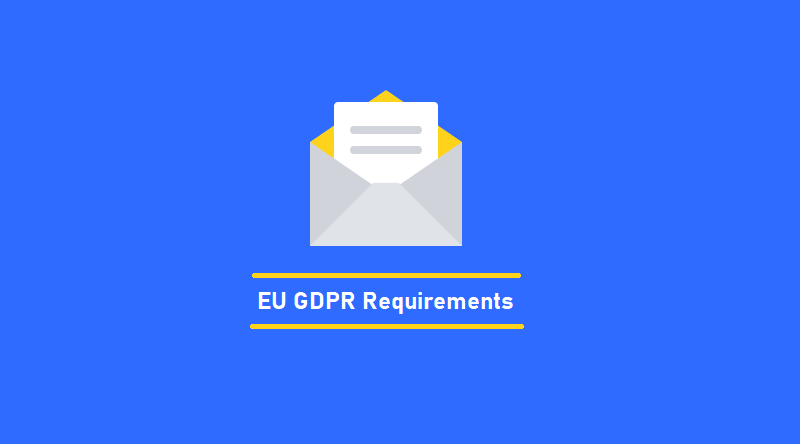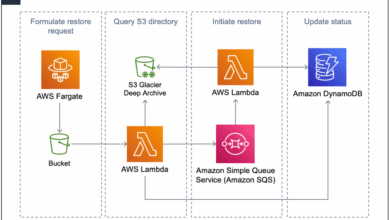
Are You Ready for EU GDPR?
Are you ready for EU GDPR? This landmark regulation has reshaped how businesses handle personal data, and understanding its implications is crucial for survival in today’s digital landscape. From data protection impact assessments to handling data subject access requests, navigating the GDPR requires a proactive and informed approach. This post breaks down the key aspects of GDPR compliance, helping you understand your obligations and prepare your organization for success.
We’ll delve into the core principles, explore common pitfalls, and offer practical steps to ensure you’re not just compliant, but confident in your data handling practices. Whether you’re a small business or a multinational corporation, understanding the GDPR is no longer optional – it’s essential. Let’s explore how to turn GDPR compliance from a daunting task into a strategic advantage.
Understanding EU GDPR Readiness
The EU General Data Protection Regulation (GDPR) is a landmark regulation that significantly impacts how organizations collect, process, and store personal data of individuals within the European Union. Understanding its core principles and obligations is crucial for ensuring compliance and avoiding hefty fines. This guide provides a practical overview of GDPR readiness, aiming to equip organizations with the knowledge they need to navigate this complex regulatory landscape.
Core Principles of the EU GDPR
The GDPR is built upon six core principles: lawfulness, fairness, and transparency; purpose limitation; data minimisation; accuracy; storage limitation; and integrity and confidentiality. These principles ensure that personal data is handled responsibly and ethically. Lawfulness, fairness, and transparency demand that data processing is legal, fair, and transparent to the data subject. Purpose limitation restricts data processing to specified, explicit, and legitimate purposes.
Data minimization dictates that only necessary data should be collected. Accuracy ensures data is accurate and kept up to date. Storage limitation requires data to be kept only as long as necessary. Finally, integrity and confidentiality mandates the security and confidentiality of personal data.
Key Obligations for Organizations Under GDPR
Organizations processing personal data under the GDPR face several key obligations. These include appointing a Data Protection Officer (DPO), conducting data protection impact assessments (DPIAs), implementing appropriate technical and organizational measures to ensure data security, providing data subjects with clear and concise information about data processing activities, and responding to data subject requests such as access, rectification, erasure, and restriction of processing.
Failure to meet these obligations can result in significant financial penalties.
Essential GDPR Compliance Steps
A comprehensive approach to GDPR compliance involves several crucial steps. This checklist Artikels essential actions:
- Conduct a data mapping exercise to identify all personal data processed.
- Implement data protection policies and procedures.
- Appoint a DPO if required.
- Conduct DPIAs where necessary.
- Implement appropriate technical and organizational security measures.
- Provide data subjects with information about data processing activities.
- Establish procedures for handling data subject requests.
- Regularly review and update data protection measures.
- Train employees on GDPR requirements.
- Establish a process for handling data breaches.
GDPR Compliance Process Flowchart
Imagine a flowchart with the following stages:
1. Data Mapping
Identify all personal data processed. This is represented by a box labeled “Data Mapping”. An arrow points to the next stage.
2. Risk Assessment
Evaluate the risks associated with data processing. This is another box, “Risk Assessment”, connected by an arrow.
3. Implementation of Controls
Implement technical and organizational measures to mitigate risks. A box labeled “Implement Controls” follows.
GDPR compliance is a big deal, especially when building apps. Making sure your Domino apps are ready requires careful planning, and understanding the development landscape is key. That’s why I found this article on domino app dev the low code and pro code future so helpful – it really highlighted how modern development approaches can help streamline GDPR compliance.
Ultimately, building secure, compliant apps is crucial for peace of mind in this regulatory environment.
4. Monitoring and Review
Regularly monitor and review data protection measures. A final box, “Monitoring and Review”, is linked. The flowchart illustrates a cyclical process, with an arrow looping from “Monitoring and Review” back to “Risk Assessment”, indicating continuous improvement and adaptation.
GDPR Compliance Across Industries
| Industry | Data Processed | Key Challenges | Typical Compliance Measures |
|---|---|---|---|
| Healthcare | Patient records, medical history | Data sensitivity, stringent regulations | Robust access controls, encryption, regular audits |
| Finance | Financial transactions, customer data | Data breaches, fraud prevention | Strong authentication, data encryption, fraud detection systems |
| E-commerce | Customer orders, payment details | Data security, consent management | Secure payment gateways, transparent privacy policies, consent management tools |
| Education | Student records, academic performance | Data protection of minors, parental consent | Data minimization, secure storage, parental consent mechanisms |
Assessing Current GDPR Compliance Status: Are You Ready For Eu Gdpr

So, you’ve decided to tackle GDPR compliance. Fantastic! But knowing the regulations isn’t enough; you need to understand where your organization currently stands. This involves a thorough assessment of your data handling practices against the GDPR’s requirements. This process isn’t just about avoiding hefty fines; it’s about building trust with your customers and fostering a culture of data protection within your organization.This section delves into the practical aspects of assessing your GDPR compliance, identifying potential gaps, and outlining the steps to address them.
We’ll cover common violations, auditing processes, and best practices for handling data subject requests and conducting data protection impact assessments.
Potential GDPR Compliance Gaps
Many organizations, even those with established data protection policies, often overlook crucial areas of GDPR compliance. A hypothetical organization, let’s call it “Acme Corp,” might have gaps in several key areas. For instance, they may lack a comprehensive record of processing activities, detailing exactly what personal data they collect, why, and how it’s used. They might not have adequately informed individuals about their data rights or obtained valid consent for data processing.
Further, their data security measures might be insufficient to protect against breaches, and they might lack a clear process for handling data subject access requests (DSARs). Finally, they may not have conducted Data Protection Impact Assessments (DPIAs) for high-risk processing activities. Identifying these gaps is the first step towards achieving full compliance.
Examples of Common GDPR Violations and Consequences
Failing to comply with the GDPR can result in significant financial penalties. For example, a company failing to adequately secure personal data leading to a data breach could face a fine of up to €20 million or 4% of annual global turnover, whichever is higher. Another common violation is the unlawful transfer of personal data outside the European Economic Area (EEA) without appropriate safeguards in place.
This could also lead to substantial fines. Consider the case of British Airways, which faced a fine of £20 million for a data breach affecting hundreds of thousands of customers. This highlights the severity of non-compliance. Similarly, a failure to respond to a DSAR within the legally mandated timeframe can result in penalties.
Conducting a GDPR Compliance Audit
A GDPR compliance audit is a systematic examination of your organization’s data processing activities against the requirements of the GDPR. This involves reviewing policies, procedures, and technical measures to identify any gaps or weaknesses. The audit process typically involves:
- Defining the scope: Identifying all personal data processing activities within the organization.
- Gathering evidence: Collecting relevant documentation, such as data processing agreements, privacy policies, and security policies.
- Assessing compliance: Evaluating the organization’s practices against the GDPR’s requirements.
- Identifying gaps: Pinpointing areas where the organization falls short of compliance.
- Developing a remediation plan: Creating a plan to address the identified gaps.
The audit should be conducted by individuals with expertise in data protection and privacy law. External auditors can provide an independent and objective assessment.
Data Subject Access Request (DSAR) Handling
Handling DSARs efficiently and effectively is crucial for GDPR compliance. Here’s a step-by-step guide:
- Acknowledgement: Acknowledge receipt of the request within one month.
- Verification: Verify the identity of the data subject.
- Data Retrieval: Locate and retrieve the requested personal data.
- Provision of Information: Provide the data subject with the requested information in an accessible format.
- Response: Respond to the request within one month of receipt, unless an extension is justified.
Organizations should establish clear procedures for handling DSARs to ensure consistency and efficiency.
Implementing Data Protection Impact Assessments (DPIAs)
DPIAs are necessary for processing activities that are likely to result in a high risk to the rights and freedoms of individuals. They involve systematically identifying and assessing the risks associated with a specific processing activity and implementing appropriate safeguards. The process includes:
- Identifying the processing activity: Clearly define the processing activity that requires a DPIA.
- Identifying the risks: Assess the potential risks to individuals’ rights and freedoms.
- Evaluating the risks: Determine the likelihood and severity of the identified risks.
- Implementing safeguards: Develop and implement measures to mitigate the identified risks.
- Monitoring and review: Regularly monitor the effectiveness of the implemented safeguards and review the DPIA as necessary.
DPIAs should be documented and kept up-to-date. They are a key element in demonstrating proactive compliance with the GDPR.
Implementing GDPR Compliance Measures
Putting the GDPR into practice requires a multi-faceted approach encompassing technical safeguards, robust policies, and comprehensive employee training. This isn’t just about ticking boxes; it’s about embedding a culture of data protection throughout your organization. Effective implementation ensures not only compliance but also builds trust with your customers and strengthens your brand reputation.
Implementing GDPR compliance involves a strategic combination of technical and organizational measures designed to protect personal data throughout its lifecycle. This includes data collection, processing, storage, and disposal. A proactive approach, rather than a reactive one, is crucial for minimizing risks and avoiding potential penalties.
Data Security Policies and Procedures
Data security policies and procedures should detail how personal data is handled, stored, and protected. These policies should be accessible to all employees and regularly reviewed and updated. A strong policy should clearly Artikel access control measures, encryption protocols, data breach response procedures, and regular security audits. For example, a policy might specify that only authorized personnel can access sensitive data, and that all data transfers must be encrypted using industry-standard algorithms.
Regular penetration testing and vulnerability assessments are also vital components of a comprehensive data security policy.
Data Minimization and Purpose Limitation
Data minimization means collecting and processing only the data absolutely necessary for specified, explicit, and legitimate purposes. Purpose limitation restricts the use of personal data to only those purposes for which it was originally collected. For instance, if you collect email addresses for newsletter subscriptions, you shouldn’t use that data for targeted advertising without explicit consent. Similarly, if you collect customer data for order processing, you should avoid storing unnecessary information like browsing history unless explicitly permitted.
Regular data audits should be conducted to ensure adherence to these principles, and any unnecessary data should be promptly deleted.
Data Breach Response Plan
A comprehensive data breach response plan is essential for mitigating the impact of any security incident. This plan should Artikel procedures for identifying, investigating, containing, and reporting data breaches to the relevant authorities and affected individuals. It should include a communication strategy for notifying affected parties, a timeline for action, and roles and responsibilities for each team member involved.
A realistic example would involve a clear escalation path for reporting breaches, pre-defined templates for communication with authorities and data subjects, and a process for conducting a post-incident review to identify areas for improvement. Regular simulations of data breach scenarios can help refine the plan and improve response times.
Employee Training Program on GDPR Compliance
Effective employee training is crucial for ensuring GDPR compliance. A comprehensive program should cover the key principles of the GDPR, employees’ responsibilities regarding data protection, and the consequences of non-compliance. Training should be delivered through a variety of methods, including online modules, workshops, and regular updates. The training should be tailored to the roles and responsibilities of individual employees.
For example, employees handling customer data might receive more in-depth training on data security and privacy than those in other departments. Regular assessments and quizzes can help gauge the effectiveness of the training and identify areas needing further attention. The training should also cover practical scenarios and case studies to reinforce learning and promote understanding.
Data Subject Rights and Responsibilities

The EU GDPR grants significant rights to individuals (data subjects) regarding their personal data. Understanding these rights and the procedures for handling related requests is crucial for any organization processing personal data within the EU. Failure to comply can result in substantial fines and reputational damage. This section Artikels these rights, the processes involved in managing requests, and best practices for communication.
Data Subject Rights Under the GDPR
The GDPR Artikels several key rights for data subjects. These include the right of access, rectification, erasure (“right to be forgotten”), restriction of processing, data portability, objection, and the right not to be subject to automated individual decision-making, including profiling. These rights empower individuals to control how their personal data is used and processed. Each right has specific conditions and limitations, and organizations must be prepared to handle requests effectively and efficiently.
Handling Data Subject Requests
Organizations must establish clear procedures for handling data subject requests. This involves designating a point of contact, setting response times (typically one month), and maintaining accurate records of all requests and responses. The process should include verifying the identity of the requester to prevent unauthorized access. For complex or voluminous requests, organizations may need to request an extension, but this must be justified and communicated to the data subject.
A well-defined internal process, documented and regularly reviewed, is essential for compliance.
Examples of Data Subject Rights Exercised, Are you ready for eu gdpr
Consider these scenarios: a customer requests a copy of all their personal data held by a company (right of access); an individual asks for inaccurate information in their profile to be corrected (right to rectification); a user requests their account to be deleted from a social media platform (right to erasure); a job applicant asks for their application data to be withheld from further processing (right to restriction of processing).
These are common examples illustrating how data subjects can exercise their rights under the GDPR. Organizations must be prepared to handle diverse requests efficiently and legally.
Best Practices for Communicating with Data Subjects
Clear, concise, and accessible communication is paramount. Organizations should provide easily understandable information about data subject rights, ideally through a dedicated privacy policy and easily accessible contact information for data protection queries. Responses to requests should be timely, informative, and in plain language, avoiding technical jargon. Transparency is key; data subjects should be kept informed throughout the process.
Regularly reviewing and updating communication materials ensures they remain compliant and relevant.
Managing Consent According to GDPR Guidelines
Consent under the GDPR must be freely given, specific, informed, and unambiguous. It must be demonstrable that consent has been given, meaning organizations need to keep records. Consent should be easily withdrawn, and the process for doing so should be clearly explained. Pre-ticked boxes or bundled consents are not permitted. Consent should be obtained separately for each purpose for which data is processed.
For example, separate consent might be needed for marketing communications and for processing personal data for the provision of a service. Organizations must ensure that the data subject understands what they are consenting to and the implications of providing consent.
International Data Transfers and GDPR
The General Data Protection Regulation (GDPR) significantly impacts how organizations handle the transfer of personal data outside the European Union (EU). Understanding these implications is crucial for maintaining compliance and avoiding hefty fines. This section will explore the key aspects of international data transfers under GDPR, focusing on the necessary safeguards and legal frameworks.
Transferring personal data outside the EU presents several challenges. The primary concern is ensuring the same level of data protection afforded within the EU is maintained in the recipient country. This is because data protection laws may differ significantly across jurisdictions, potentially exposing personal data to higher risks of breaches or misuse. Therefore, specific mechanisms are required to legitimize such transfers.
Standard Contractual Clauses (SCCs)
Standard Contractual Clauses (SCCs) are pre-approved contractual clauses designed by the European Commission to ensure an adequate level of data protection when transferring personal data to countries outside the EU/EEA that don’t have an adequacy decision. They essentially create a legally binding agreement between the data exporter (the EU-based organization) and the data importer (the organization receiving the data outside the EU).
These clauses Artikel the responsibilities of both parties in protecting the data, including security measures, data subject rights, and dispute resolution mechanisms. The SCCs must be implemented correctly and consistently, and their use requires careful consideration of the specific circumstances of each data transfer. A failure to correctly implement the SCCs renders them ineffective and leaves the organization vulnerable to non-compliance.
Adequacy Decisions
Adequacy decisions are formal determinations by the European Commission that a particular country or territory provides an adequate level of data protection comparable to that within the EU. If a country has an adequacy decision, transferring personal data to that country is generally permitted without the need for additional safeguards, simplifying the process considerably. However, the European Commission regularly reviews these decisions, and they can be withdrawn if the level of protection is deemed to have deteriorated.
Examples of countries that currently have adequacy decisions include several countries in the Americas, Japan, and some in the Asia-Pacific region. It’s vital to stay updated on the current list of countries with adequacy decisions.
Appropriate Safeguards for International Data Transfers
Several safeguards, beyond SCCs and adequacy decisions, can be used to protect personal data during international transfers. These include:
These safeguards are not mutually exclusive and can be combined to create a robust data protection framework for international transfers. The choice of safeguard depends on the specific circumstances of the transfer and the risk involved.
- Binding Corporate Rules (BCRs): These are internal company policies approved by a data protection authority that govern the transfer of personal data within a multinational organization. They provide a comprehensive framework for data protection across different jurisdictions.
- Certification Mechanisms: These involve obtaining certification from an independent body that verifies the organization’s compliance with data protection standards relevant to international data transfers. This provides assurance to data subjects and regulators.
- Codes of Conduct: Organizations can adhere to approved codes of conduct that provide guidelines for data protection during international transfers. Compliance with such codes can be a supplementary safeguard.
Framework for Managing Data Transfers Across Different Jurisdictions
A robust framework for managing international data transfers requires a multi-faceted approach:
This framework ensures a proactive and compliant approach to managing international data transfers, mitigating risks and maintaining compliance with GDPR regulations.
- Risk Assessment: Before any data transfer, a thorough risk assessment should be conducted to identify potential risks and vulnerabilities associated with the transfer.
- Selection of Appropriate Safeguards: Based on the risk assessment, the appropriate safeguards (SCCs, adequacy decisions, or other mechanisms) should be selected and implemented.
- Documentation and Record Keeping: Meticulous documentation of the data transfer process, including the rationale for the chosen safeguards, is crucial for demonstrating compliance.
- Monitoring and Review: Regular monitoring and review of the effectiveness of the chosen safeguards are necessary to ensure ongoing compliance and address any emerging risks.
- Incident Response Plan: A well-defined incident response plan should be in place to address any data breaches or security incidents that may occur during the transfer.
Enforcement and Penalties for Non-Compliance
The General Data Protection Regulation (GDPR) isn’t just a set of guidelines; it’s a legally binding regulation with serious consequences for non-compliance. Understanding the enforcement mechanisms and potential penalties is crucial for any organization processing personal data within the EU or targeting EU residents. Failure to comply can lead to significant financial losses and reputational damage.Enforcement mechanisms under GDPR rely heavily on the involvement of supervisory authorities, each responsible for their respective member state.
These authorities investigate complaints, conduct audits, and impose penalties on organizations that violate the regulation. The process involves investigations, warnings, and ultimately, fines. The severity of the penalty depends on the nature and extent of the violation.
Supervisory Authorities and Their Role
Supervisory authorities (SAs) are the key players in enforcing GDPR. Each EU member state designates at least one SA, often a data protection agency. These authorities are responsible for monitoring compliance, investigating complaints from data subjects or other sources, conducting audits, issuing warnings, and imposing administrative fines. They have the power to demand information, access systems, and take corrective actions.
The cooperation between different SAs is essential for handling cross-border data processing. For example, if a company based in Germany processes data of individuals in France, both the German and French SAs might be involved in the enforcement process. This collaboration ensures a consistent and effective application of the GDPR across the EU.
Examples of Significant GDPR Fines
Several high-profile cases demonstrate the potential severity of GDPR fines. For instance, Google faced a significant fine for violating the transparency principle regarding data processing. Another notable example involves a large retailer fined for inadequate security measures leading to a data breach. These fines, reaching millions of euros, highlight the financial risks associated with non-compliance. The impact of these fines extends beyond the financial penalties; they often result in reputational damage, loss of customer trust, and legal challenges.
These cases serve as stark reminders of the importance of proactive GDPR compliance.
Mitigating the Risk of GDPR Penalties
A robust strategy for mitigating the risk of GDPR penalties involves a multi-faceted approach. Firstly, a comprehensive data protection impact assessment (DPIA) should be conducted for high-risk processing activities to identify and address potential vulnerabilities proactively. Secondly, regular audits and internal reviews are vital to ensure ongoing compliance. Thirdly, employee training programs should educate staff on data protection principles and their responsibilities.
Finally, establishing clear data processing procedures and implementing robust technical and organizational security measures are paramount. Proactive compliance, rather than reactive remediation, is the most effective way to avoid costly penalties and maintain public trust.
Potential Penalties for GDPR Violations
The following table Artikels potential penalties for various GDPR violations. The exact amount of the fine will depend on the specific circumstances of the violation, including the nature, severity, and duration of the non-compliance, as well as the organization’s turnover and the intentional nature of the violation.
| Violation | Article | Maximum Fine | Example |
|---|---|---|---|
| Failure to obtain consent | Art. 6(1) | €20 million or 4% of annual global turnover | Processing personal data without explicit consent for marketing purposes. |
| Data breach notification failure | Art. 33 & 34 | €20 million or 2% of annual global turnover | Failing to report a data breach to the supervisory authority and affected individuals within the required timeframe. |
| Illicit transfer of personal data | Art. 46 | €20 million or 4% of annual global turnover | Transferring personal data to a third country without appropriate safeguards. |
| Lack of data security measures | Art. 32 | €20 million or 4% of annual global turnover | Failure to implement appropriate technical and organizational measures to protect personal data against unauthorized access. |
Final Review

So, are you ready for EU GDPR? The journey to compliance might seem complex, but with a structured approach, the right tools, and a commitment to data protection, it’s entirely achievable. By understanding your obligations, conducting thorough audits, and implementing robust measures, you can not only avoid hefty fines but also build trust with your customers and strengthen your brand reputation.
Remember, data protection isn’t just about ticking boxes; it’s about building a culture of responsibility and transparency. Let’s make data protection a cornerstone of your business strategy.
General Inquiries
What happens if my company doesn’t comply with GDPR?
Non-compliance can lead to significant fines, reputational damage, and loss of customer trust. The penalties can be substantial, potentially impacting your bottom line significantly.
How often should I conduct a GDPR compliance audit?
Regular audits, at least annually, are recommended to identify and address any emerging risks or vulnerabilities in your data protection practices.
Can I transfer personal data outside the EU?
Yes, but you must ensure appropriate safeguards are in place, such as using Standard Contractual Clauses (SCCs) or relying on adequacy decisions from the European Commission.
What is a Data Protection Impact Assessment (DPIA)?
A DPIA is a process to identify and mitigate potential risks to individuals’ privacy when processing personal data, particularly for high-risk activities.





